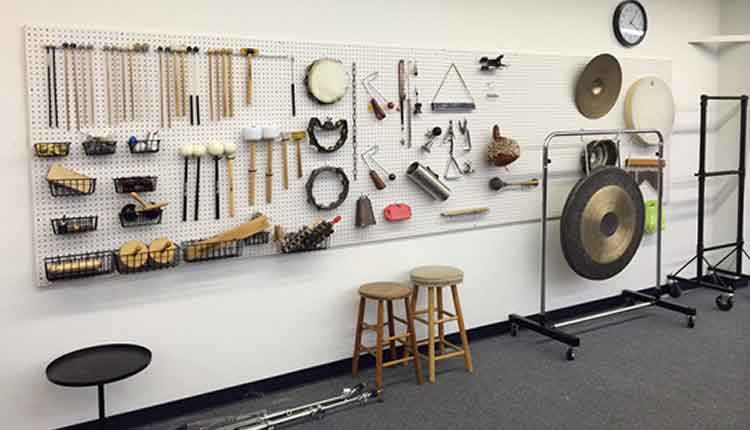Unlike most other instrumentalists, percussion students typically do not, and could not, own many of the instruments they play. Instead, the school or ensemble traditionally purchases many of the percussion instruments and students are responsible for sticks, mallets, and possibly other small implements or instruments. The obvious question to follow becomes, what should I own, either for use in an ensemble or practice at home? While the specific answer to that question should come from your band director or private instructor, here are some suggestions based on grade level.
GRADE SCHOOL (5th-6th Grade)
Student Percussion Kit
- Bell Set
- Practice Pad
- Stand (for bells & pad)
Snare Drum Sticks
- SD1 or SD1F (junior stick for smaller hands)
Bell Mallets
- Hard plastic with wood shafts
- Metronome (ideally with a light & headphone jack)
Metronome (ideally with a light & headphone jack)
JUNIOR HIGH SCHOOL (7th-9th Grade)
By this time, most mallet percussion practicing will be done on school instruments (i.e. xylophone, marimba). The bell set becomes a convenience rather than a necessity and the student’s mallet collection should grow noticeably. Students should always keep a practice pad for “quiet” practice times and some students may decide at this time to purchase a snare drum or drumset.
Stick/Mallet Bag
- for at least 6-8 pairs (consider a larger bag that will also hold sheet music folders or method books)
Snare Drum Sticks
- SD1 (concert snare drum sticks)
- 5A (nylon tip drumset sticks) (opt.)
Bell Mallets
- hard plastic with wood shafts
Xylophone/Marimba Mallets
- medium rubber
- medium-hard yarn (opt.)
Timpani Mallets (opt.)
- staccato (med.-hard) with wood shafts
Metronome (with light & headphone jack)
HIGH SCHOOL (10th-12th Grade)
During this time, students will likely participate in marching percussion, be introduced to 4-mallet technique, and be given percussion solo and/or ensemble opportunities. Advanced students may consider purchasing a mallet instrument (i.e. xylophone, marimba) at this time. Other small instrument purchases (bongos, congas, djembe, cowbell, woodblock) make great gifts or short-term savings goals for students.
Stick/Mallet Bag
- for at least 12-15 pairs
Snare Drum Sticks
- SD1 (concert snare drum sticks)
- 5A (nylon tip drumset sticks)
- DC1 (marching snare drum sticks)
Bell Mallets
- hard plastic with wood shafts
Xylophone Mallets
- medium rubber
- poly-ball (soft plastic)
Marimba Mallets
- medium-hard yarn (2 pair)
- medium-soft yarn (2 pair) (opt.)
Vibraphone Mallets (opt.)
- medium cord (2 pair)
Timpani Mallets
- staccato (med.-hard)
- general (medium)
Trap table cloth (i.e. dark color hand towel)
- something to set on a music stand for holding mallets or small percussion instruments
Metronome
- • preferably with a light, headphone jack, and the capability to subdivide a variety of ways
Pitch Pipe or Tuning Fork (for timpani tuning)
Josh Gottry is an active percussion instructor, performer, and composer in Gilbert, Arizona. He serves as an instructor for several local percussion ensembles and private percussion students, and performs regularly as both a soloist and ensemble member. As a composer, Mr. Gottry is a three-time ASCAP grant recipient with seventeen works published for percussion. Josh Gottry is a clinician for Mike Balter Mallets, Pro-Mark Sticks, and Yamaha Percussion.
To contact Josh Gottry, e-mail josh@gottrypercussion.com


